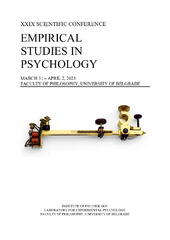Приказ основних података о документу
Leaders in high school collaborative problem-solving groups: Who are they and are they really needed for successful collaboration?
| dc.creator | Mojović Zdravković, Kristina | |
| dc.creator | Videnović, Marina | |
| dc.creator | Ivanović, Jovan | |
| dc.date.accessioned | 2023-12-18T11:17:14Z | |
| dc.date.available | 2023-12-18T11:17:14Z | |
| dc.date.issued | 2023 | |
| dc.identifier.isbn | ISBN-978-86-6427-247-6 | |
| dc.identifier.uri | http://reff.f.bg.ac.rs/handle/123456789/5729 | |
| dc.description.abstract | During collaborative problem-solving (CPS), team members take on different roles in the group (Mercier et al., 2014). Among these roles, the leader role has been by far the most empirically investigated. Previous research focused on examining leader characteristics, leader-member relationships, and leader assignments during collaboration to identify leader-related factors that facilitate productive CPS. The present study examined the common understanding of the leader role among highschoolers, based on their previous involvement in CPS during school tasks and projects. Data were collected using a semi-structured interview on a sample of 31 students (17 f evoked using open questions focusing on their previous experiences with leadership during CPS, understanding of the leader role, and perceived (dis)advantages of leadership emergence during teamwork. Following the coding of interview transcripts, 60 coded segments were analyzed using thematic analysis. Almost all interviewed students (N = 28; 98%) reported an experience of having a team leader, which either spontaneously emerged during group-work or was teacher-appointed prior to group-work. Among 29 students answering questions about leadership, 17 (59%) asserted that teams should have a leader, stating the following reasons: coordination and monitoring (f = 10), authority over team functioning (f = 4), assuming responsibility for potential task failure (f = 2), conflict prevention (f = 1). Nine students (31%) uttered against leader establishment during CPS, because of their: negative experiences with authoritarian leaders (f = 4), high commitment to team member equality (f = 3), and conviction that it can weaken communication (f = 1) or deteriorate friendships (f = 1). The final three interviewees (10%) thought that having a leader can be beneficial (with similar reasons as the pro-leader group), but only if the leader is not too controlling. While describing their usual group leaders, students referred to peers who are perceived as the most: a. experienced in group work, b. knowledgeable about the topic, c. skilful in communication and negotiation, and d. hard-working. Our current findings largely correspond to extant findings on the difference between efficient and authoritarian leadership, while also providing important insights into the dynamics of collaborative peer interactions within the Serbian educational context. | sr |
| dc.language.iso | en | sr |
| dc.relation | PEERSolvers - The PEER model of collaborative problem solving: Developing young people’s capacities for constructive interaction and teamwork | sr |
| dc.rights | openAccess | sr |
| dc.rights.uri | https://creativecommons.org/licenses/by/4.0/ | |
| dc.source | Book of Abstracts, XXIX Scientific Conference Empirical Studies in Psychology, March 31-April 2, Faculty of Philosophy, University of Belgrade | sr |
| dc.subject | collaborative problem solving | sr |
| dc.subject | collaboration | sr |
| dc.subject | leaders | sr |
| dc.subject | high school students | sr |
| dc.subject | type of leadership | sr |
| dc.title | Leaders in high school collaborative problem-solving groups: Who are they and are they really needed for successful collaboration? | sr |
| dc.type | conferenceObject | sr |
| dc.rights.license | BY | sr |
| dc.citation.spage | 110 | |
| dc.identifier.fulltext | http://reff.f.bg.ac.rs/bitstream/id/14425/bitstream_14425.pdf | |
| dc.identifier.rcub | https://hdl.handle.net/21.15107/rcub_reff_5729 | |
| dc.type.version | publishedVersion | sr |

